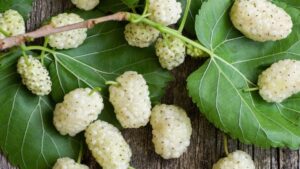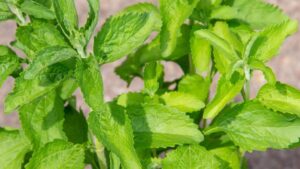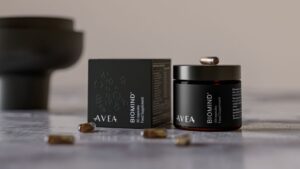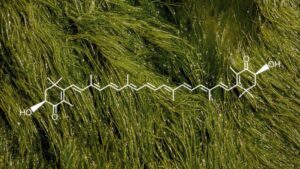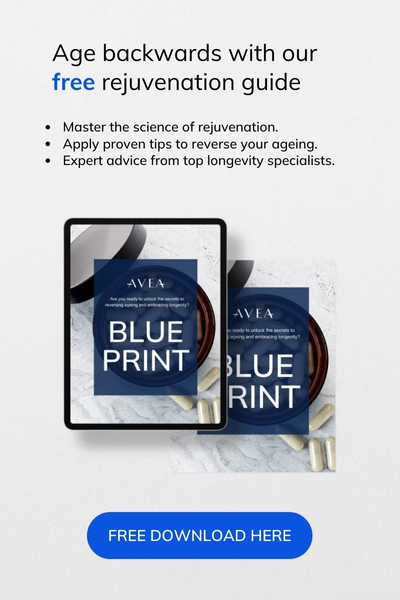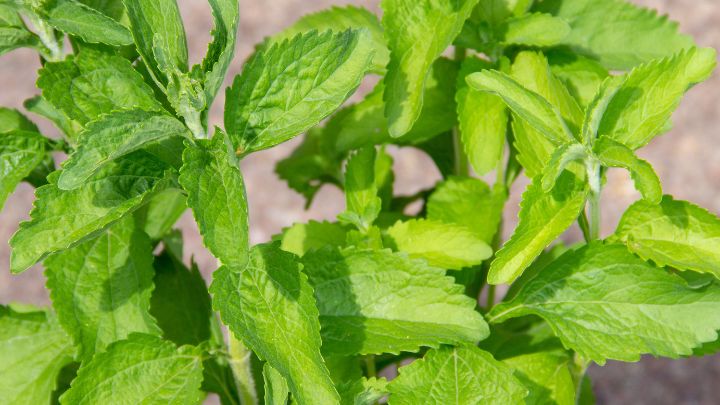Not many of us like hearing we are doing something wrong, especially when we think we are great at protecting ourselves.
“Oh, but I don’t do drugs. Oh, but I don’t smoke.” Well, it might shock you to know that sugar can be as addictive as cocaine.
Just because governments around the world have legalised certain substances does not mean only those are harmful.
Sugar, hidden in many of our everyday foods, triggers our brain’s reward system in ways that are strikingly similar to addictive drugs.
This article at Avea delves into the science behind sugar addiction, its impacts, and practical steps to break free from its grip.
Smart are those who reassess their habits, more often than they believe they are set for life.
In this article
Free guide to reverse your biological age

- Master the science of rejuvenation.
- Apply proven tips to turn back the clock.
- Transform your health with top longevity specialists.
What is sugar?
Sugar is a simple carbohydrate that provides energy to your body. It comes in various forms, primarily glucose, fructose, and sucrose.
- Glucose: The fundamental energy source for your cells, essential for brain function and physical activity, found in fruits, vegetables, and grains.
- Fructose: Found naturally in fruits, honey, and some vegetables, it is metabolised in the liver and is sweeter than glucose.
- Sucrose: Commonly known as table sugar, it’s a disaccharide composed of glucose and fructose. Sucrose is found naturally in many plants, including sugar cane and sugar beets, from which it is extracted and refined to produce table sugar.

Naturally occurring sugars in whole foods come with fibre, vitamins, and minerals, which help moderate their absorption and provide nutritional benefits.
Added sugars found in processed foods contribute to excess calorie intake without offering any nutritional value, leading to health issues like obesity, type II diabetes, and heart disease.
What is sugar addiction?
Sugar addiction occurs where excessive consumption of sugar leads to compulsive cravings and an inability to control intake despite negative consequences.
The effects of added sugar intake — higher blood pressure, inflammation, weight gain, diabetes, and fatty liver disease — are all linked to an increased risk for heart attack and stroke.
This behaviour is driven by sugar’s ability to trigger the release of dopamine, a neurotransmitter involved in your brain’s reward circuit, creating a cycle of craving and consumption similar to that seen in drug addiction.
Sugar addiction is primarily driven by the consumption of sucrose and high-fructose corn syrup, which are common in processed foods and beverages.
Whilst glucose alone can trigger a mild dopamine response, the combination of glucose and fructose in sucrose and high-fructose corn syrup results in a more potent activation of the brain’s reward system.
What do experts have to say about sugar addiction?
Dr. Alan Greene, a children’s health and wellness expert, explains, “In medicine, addiction describes a situation where brain chemistry compels repeated substance use despite harmful consequences. Evidence suggests too much added sugar could lead to true addiction.”
Cassie Bjork, RD, founder of Healthy Simple Life, states, “Sugar activates opiate receptors in our brain and affects the reward centre, leading to compulsive behaviour despite negative consequences, like weight gain and headaches.”
Research shows that sugar can also cause cravings, bingeing, and withdrawal symptoms in a manner similar to drugs of abuse.
This neurochemical response shows the potential for sugar to become an addictive substance for many people without them realising it.
Examples of sugary foods in everyday life
Sugar consumption does not only revolve around obvious sweets like candy and sodas. Many people unknowingly consume excessive sugar in foods and beverages they consider healthy.
For example, low-fat yoghurt often contains high levels of added sugar. Popular breakfast cereals and granola bars, marketed as healthy options, can be sugar-laden.
Even everyday condiments like ketchup and barbecue sauce are packed with hidden sugars.
Consider daily routines: reaching for a sugary coffee drink in the morning, having a mid-afternoon soda, or indulging in dessert after dinner.
These habits can quickly add up, creating a cycle of dependency. Recognising these patterns in your own life is crucial to understanding how pervasive sugar addiction can be.
It’s not just about those with a sweet tooth; it’s about the everyday choices that lead to excessive sugar consumption. But even worse, it’s not just table sugar that’s the problem.
Many people don’t realise that all carbohydrates, except fibres, eventually break down into glucose in the body.
This means that even foods like bread, pasta, and rice contribute to your overall sugar intake.
Whilst these foods are essential for energy, overconsumption can lead to similar addictive patterns as those seen with direct sugar consumption.
Hidden sugar in common foods
- A single can of coke contains 44 grams of sugar.
- Your favourite donut contains about 30 grams of sugar.
- Your “healthy” orange juice contains about 20 grams of sugar.
- A bowl of granola can contain up to 12 grams of sugar.
- A serving of barbecue sauce can have around 7 grams of sugar.
- A slice of white bread contains approximately 2 grams of sugar.
- A medium-sized flavoured yoghurt can have about 25 grams of sugar.
The science behind sugar addiction
Neurochemical changes in the brain
Sugar consumption triggers significant neurochemical changes in the brain, similar to those caused by addictive substances.
Dr. Nicole Avena-Blanchard and her colleagues have conducted extensive research on this topic. Their studies indicate that when sugar is consumed, it leads to the release of dopamine, a neurotransmitter associated with the brain’s reward system.
Dopamine and the brain’s reward system
Dopamine plays a crucial role in the brain’s reward circuitry, which is responsible for the feelings of pleasure and reinforcement of behaviours.
When we consume sugar, the dopamine levels in the brain increase, producing a pleasurable sensation. This mechanism is akin to the way addictive drugs such as cocaine and morphine function.
As sugar consumption continues, the brain’s dopamine receptors become less sensitive, requiring larger amounts of sugar to achieve the same pleasurable effect.
This process is known as tolerance. Over time, the person may develop cravings and engage in compulsive consumption patterns, leading to addiction.
Supporting studies and data
- Avena-Blanchard’s studies on rats have shown that intermittent access to sugar can lead to behaviours and neurochemical changes similar to those seen with drug addiction. The rats exhibited signs of bingeing, withdrawal, and craving for sugar, demonstrating the addictive potential of sugar consumption.
- Functional magnetic resonance imaging (fMRI) studies have shown that the consumption of high-sugar foods activates brain regions associated with reward and pleasure, such as the nucleus accumbens and the ventral tegmental area. These regions are also activated by addictive drugs, further supporting the idea that sugar can hijack the brain’s reward system.
- Human studies show that sugar consumption can lead to cravings and withdrawal symptoms. For instance, a study published in the American Journal of Clinical Nutrition found that high-sugar diets could increase the risk of developing addictive-like eating behaviours, similar to those observed with substance use disorders.
The average American consumes approximately 17 teaspoons (71.14 grams) of added sugars per day, far exceeding the recommended limit of 6 teaspoons (25 grams) for women and 9 teaspoons (36 grams) for men, as suggested by the American Heart Association.

WHO recommends that free sugars (sugars added to foods and drinks, and those naturally present in honey, syrups, fruit juices, and fruit juice concentrates) should account for less than 10% of total daily caloric intake. For additional health benefits, reducing this to below 5% is advised.
Symptoms and signs of sugar addiction
Recognising sugar addiction involves identifying various behavioural and physical signs.
Here are some key symptoms:
- Cravings: Intense urges to consume sugary foods, even when not hungry.
- Withdrawal symptoms: Experiencing headaches, irritability, or fatigue when reducing sugar intake.
- Compulsive eating: Difficulty controlling the amount of sugar consumed, leading to bingeing.
- Secrecy: Eating sugary foods in secret due to shame or guilt.
- Tolerance: Needing to consume more sugar over time to achieve the same pleasurable effect.
There are also subtler signs of sugar addiction that often go unnoticed:
- Energy highs and lows: Frequent energy spikes followed by crashes, leading to a cycle of consuming more sugar for quick energy boosts.
- Mood swings: Unexplained mood swings and irritability, which can be linked to fluctuating blood sugar levels.
- Poor concentration: Difficulty focusing or experiencing brain fog, as blood sugar fluctuations impact cognitive function.
- Skin issues: Frequent breakouts or skin problems, which can be exacerbated by high sugar intake.
- Digestive problems: Bloating, gas, or other digestive issues related to excess sugar consumption affecting gut health.
- Sleep disturbances: Trouble falling asleep or staying asleep, as sugar, can disrupt normal sleep patterns.
Balance your blood sugar levels
Join thousands who have transformed their health by using our science-proven Stabiliser to manage their blood sugar levels.
- Reduce glucose spikes by 40%.
- Improve your metabolic health.
- Stay energised throughout the day.
How to avoid hidden sugars
Added sugars are often hidden in foods and beverages that are marketed as healthy or low-fat, making it easy to consume excess sugar without realising it.
For example, a bottle of VitaminWater has about 27 grams of sugar. Even savoury items like pasta sauces and salad dressings often contain significant amounts of added sugars to enhance flavour.
To identify added sugars on food labels, look for the following tips:
- Check the ingredients list: Ingredients are listed in descending order by weight. Look for terms like high-fructose corn syrup, cane sugar, dextrose, and maltose.
- Look for “added sugars”: The Nutrition Facts label now includes a line for added sugars, making it easier to see how much sugar has been added to the product.
- Be aware of sugar synonyms: Sugar can appear under many names, including agave nectar, brown rice syrup, and molasses. Familiarise yourself with these terms to better understand what you’re consuming.
- Compare products: Choose products with lower amounts of total and added sugars. Opt for items with natural sweetness from fruits or other ingredients.
By being mindful of hidden sugars and learning how to read labels effectively, you can make more informed choices and reduce your overall sugar intake.
How to break sugar addiction
1. Reduce your sugar intake gradually
Gradually reducing sugar intake helps avoid withdrawal symptoms like headaches, irritability, and fatigue.
By slowly decreasing the amount of sugar consumed, your body can adjust, making the transition smoother and more sustainable.
Start by cutting down on sugary drinks, then gradually reduce the sugar added to coffee or tea and opt for less sugary snacks.
2. Opt for healthier alternatives
Replacing sugary snacks and drinks with healthier options is crucial. Instead of reaching for a candy bar, try fresh fruit, nuts, or yoghurt without added sugars.
Swap sugary beverages for water, herbal tea, or sparkling water with a splash of lemon or lime.
These alternatives not only reduce sugar intake but also provide essential nutrients and keep you satisfied longer.
3. Always eat mindfully
Mindful eating involves paying attention to what and how much you eat. By being present during meals and snacks, you can better recognise when you are truly hungry and avoid mindless eating.
Techniques such as eating slowly, savouring each bite, and avoiding distractions (like watching TV) can help reduce sugar cravings and improve overall eating habits.
4. Seek professional help if needed
If sugar addiction is severely impacting your life, seeking professional help is a wise step.
Consulting a nutritionist or psychologist can provide personalised strategies and support.
Cognitive-behavioural therapy (CBT), in particular, is effective in treating sugar addiction. Dr. Rachel Goldman, an expert in health and wellness, uses CBT to help people change their eating behaviours and develop healthier habits.
How to maintain a low-sugar lifestyle
1. Build long-term habits
Maintaining a low-sugar lifestyle requires long-term commitment and planning. Meal planning can help ensure you have healthy, low-sugar options available.
Regular physical activity also supports this lifestyle by reducing cravings and improving overall health. Keep healthy snacks on hand to avoid reaching for sugary alternatives.
2. Add support systems
Having a strong support system can make a significant difference. Friends, family, or support groups can provide encouragement and accountability. Sharing your goals and progress with others can help keep you motivated and on track.
3. Supplement smart
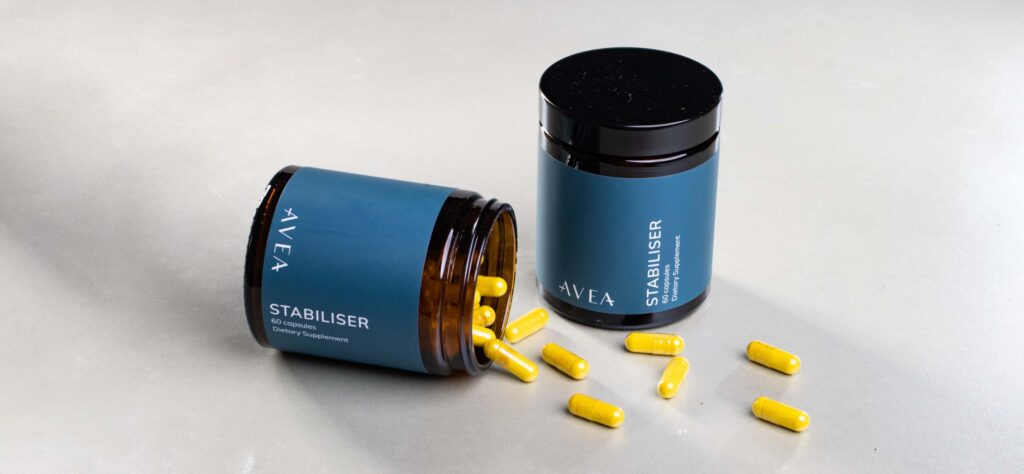
Our Stabiliser is a revolutionary natural blood sugar stabilising formula that blocks the absorption of carbs and sugars by up to 40% while you eat.
Here’s the real kicker: it helps you avoid blood sugar spikes and crashes while still allowing you to enjoy the foods you love.
Success stories
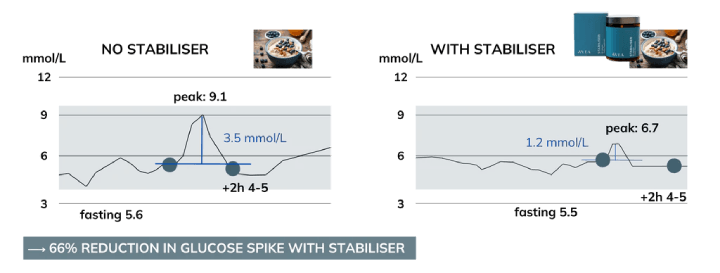
Avea customers have successfully optimised their blood sugar levels, and reduced the effects of glucose spikes, experiencing significant health improvements.
